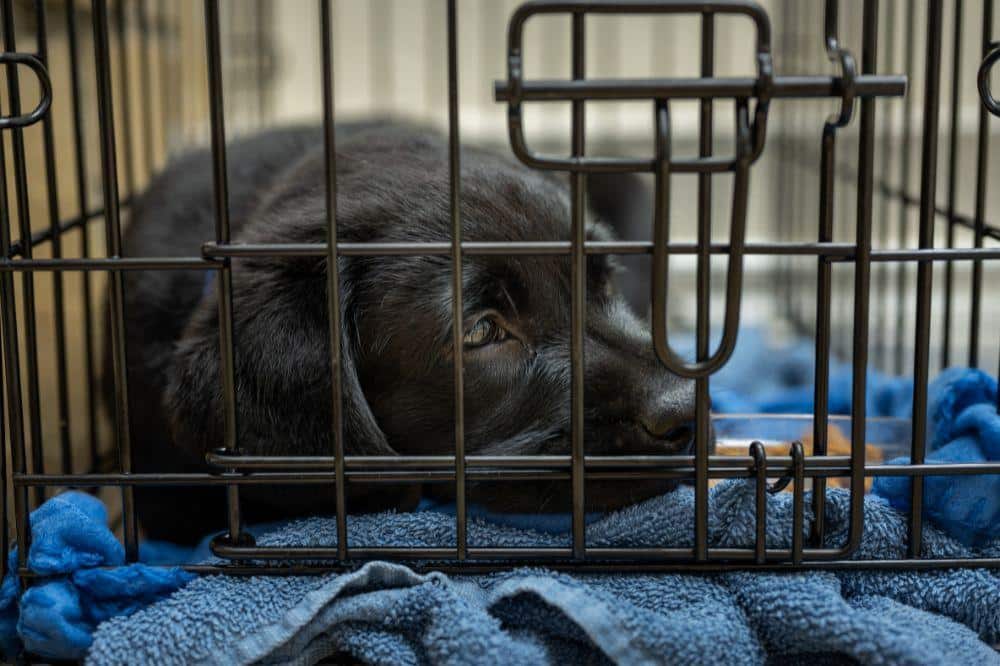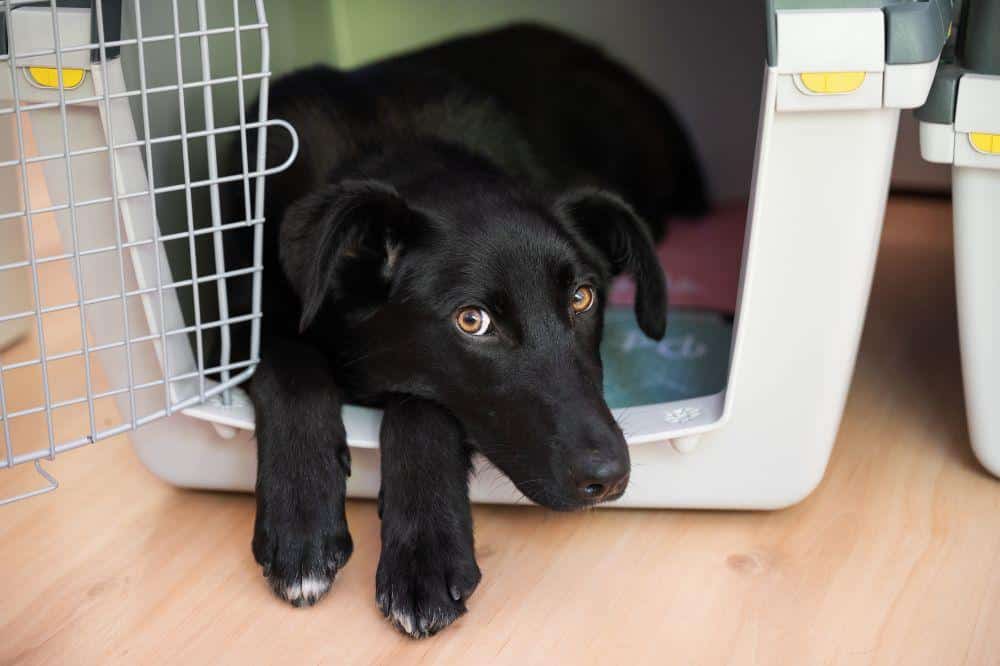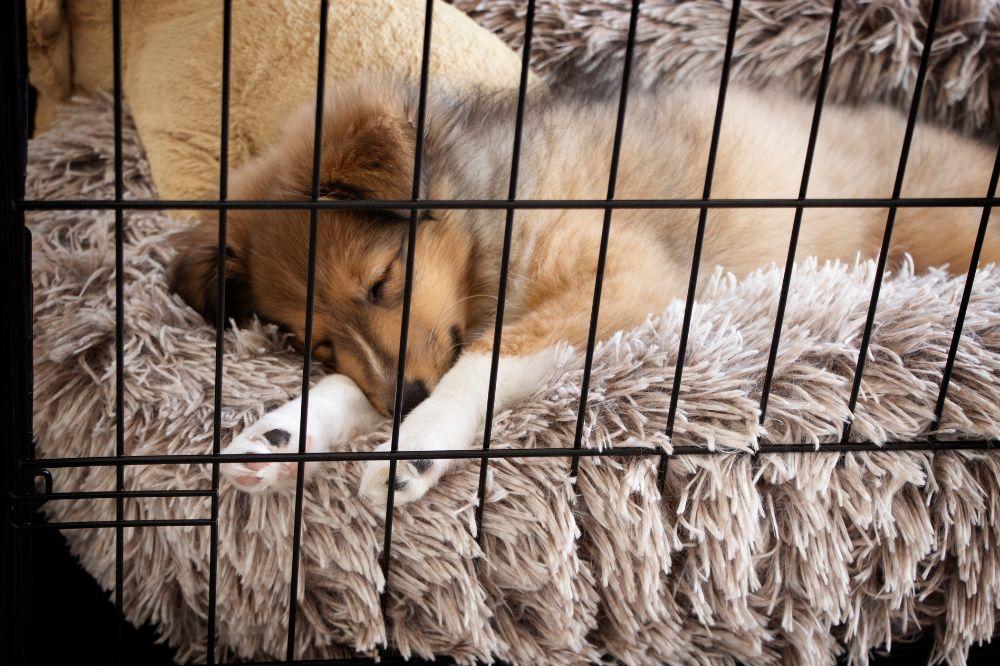Bringing a new puppy into your home is an exciting adventure filled with joy and anticipation. However, it also comes with the responsibility of teaching your furry friend good habits, starting with crate training. Crate training is more than just confining your puppy; it’s about creating a safe and comfortable space to learn, grow, and thrive. In this blog, we’ll delve into the world of crate training, exploring why it’s essential, how to choose the right crate size and the step-by-step process for both puppies and older dogs. By the end of this journey, you’ll have the knowledge and tools to establish a strong foundation for your pup’s well-being.

Why Crate Training Matters
Crate training is a cornerstone of responsible pet ownership for several reasons. Firstly, it provides a safe space for your puppy when you’re unable to supervise them, preventing accidents and destructive behavior. Secondly, it aids in housebreaking, as a dog’s instinct is to keep its den clean. By using the crate as their den, you encourage them to hold it in until you can take them outside. Lastly, crate training is crucial for travel, vet visits, and emergencies. A well-adjusted, crate-trained dog is more relaxed and less stressed in unfamiliar situations.

Training for Puppies
Introducing puppies to crate training is all about creating positive associations with their new space. Begin by placing the crate in a common area so your pup feels like part of the family. Leave the crate door open and let them explore it at their own pace. Crate training is about teaching your pup that their crate is a safe and cozy den, not a place of punishment. Keep reading for tips on crate training a puppy.
- Start Early: Begin crate training as soon as you bring your puppy home. The earlier they get used to it, the better.
- Choose the Right Crate: Pick a crate that’s cozy but not too cramped. Your pup should have enough room to stand, turn around, and lie down comfortably.
- Introduce Gradually: Let your puppy explore the crate at their own pace. Make it inviting by placing treats, toys, and comfy bedding inside.
- Positive Associations: Use treats and praise to reward your puppy when they willingly enter the crate. Make it a happy place!
- Short and Sweet: Begin with short periods of crate time, even just a few minutes, and gradually extend it as your puppy gets used to it.
- Mealtime Magic: Feed your puppy their meals near the crate and gradually move the bowl inside. This associates the crate with yummy food.
- Practice Patience: If your puppy whines or cries in the crate, don’t rush to let them out. Wait for a moment of quiet and then reward them.
- Consistent Schedule: Stick to a regular crate schedule, especially during housebreaking. Crate your pup at night and after meals.
- No Punishment: Never use the crate as a punishment. It should be a safe and positive space for your puppy.
- Exercise and Play: Before crate time, ensure your puppy gets some exercise and playtime to burn off energy.
- Supervision: Always supervise your puppy when they’re out of the crate. It helps prevent accidents and misbehavior.
- Safety First: Remove your puppy’s collar before crating to avoid safety hazards.
Crate training should always be a positive experience that builds trust and comfort between you and your puppy. With patience and consistency, your furry friend will come to see their crate as their own cozy retreat.

When to Crate Your Dog
Bringing a crate into your dog’s life can be a game-changer, offering them a secure and comforting space. But when exactly should you use it? Let’s explore how crating your dog can be beneficial, ensuring their safety and well-being.
- During Potty Training: One of the primary uses of a crate is during housebreaking. Puppies are more likely to hold their bladder and bowels in a confined space. Crate your pup regularly, like after meals or playtime, to reinforce good potty habits.
- Mealtime Management: If your dog tends to gobble down their food or has food aggression issues, crating during mealtime can help promote a calmer and more controlled feeding environment.
- When You Leave the House: Leaving your dog in a crate when you’re away prevents them from potentially dangerous situations and from getting into mischief. It keeps them safe and your home intact.
- At Night: Crating at night helps with housebreaking and ensures a safe, restful night’s sleep for you and your dog. Most dogs appreciate having a cozy den to sleep in.
- During Travel: Whether driving across town or taking a long road trip, a crate provides a secure place for your dog to travel. It reduces anxiety and keeps them restrained for safety.
- At Vet Visits: Crating your dog at the vet’s office can help keep them calm and prevent any potential stress-induced behavior issues.
- For Timeouts: Sometimes, dogs need a little timeout to cool down if they’re overly excited or exhibiting undesirable behavior. Crating for short periods can help them calm down and refocus.
- During Guest Visits: When you have guests over, a crate can be a helpful tool, preventing your dog from jumping on guests or becoming excessively exuberant.
- For Special Treats: Occasionally, surprise your dog with a stuffed Kong or puzzle toy in their crate. By doing this, you are creating a positive association with the crate and keeping them mentally engaged.
- Safety in Emergencies: In emergency situations like severe weather or home repairs, crating your dog ensures their safety and prevents them from getting underfoot.
Remember, crating should always be a positive experience for your dog. Never use the crate as a punishment, and ensure they associate it with comfort and safety. Each dog is unique, so adapt crate time to your dog’s needs and gradually increase duration as they become more comfortable. By crating your dog thoughtfully and with their well-being in mind, you create a secure and happy space for them to thrive.

Safety Measures
Crate training is a valuable tool for your dog’s well-being, but ensuring their safety during the process is paramount. Below are some safety measures to make crate training a positive and secure experience for your furry friend!
- Remove Collars: Safety first! Always remove your dog’s collar before placing them in the crate. This simple step prevents any risk of collar entanglement or choking hazards.
- Proper Ventilation: Ensure the crate is well-ventilated. Proper airflow keeps your dog comfortable and prevents overheating.
- Crate Size Matters: Choose the right-sized crate for your dog. It should be spacious enough for them to stand, turn around, and lie down comfortably but not too large to avoid accidents.
- Use Secure Latches: Check that the crate has secure latches or locks to prevent your clever pup from making an escape.
- Crate Location: Place the crate in a safe, low-traffic area where your dog won’t be disturbed. This creates a peaceful environment for them.
- Crate Contents: Keep the crate free of any hazardous objects or materials, such as sharp edges, small toys, or chewable items that could pose a choking risk.
- Regular Checks: During crating, periodically check on your dog to ensure they’re comfortable and unharmed. Provide water if necessary.
- Gradual Introduction: Introduce the crate gradually and positively. Never force your dog inside; let them explore it at their own pace.
- Crate Training as a Positive Experience: Crate training should never be associated with punishment. Make it a positive experience with treats, toys, and praise.
- Respect Limits: Be mindful of the time your dog spends in the crate. Avoid using it as a long-term solution; dogs need social interaction and exercise outside the crate.
By following the above safety measures, you can ensure crate training is a secure and joyful process for your pup. Remember, a safe and comfortable crate creates a happy haven where your dog can relax, learn, and grow.

Wrapping Up Tips for Successful Crate Training
Remember, crate training takes time and patience. Be understanding of your dog’s feelings and progress. Some dogs may adapt quickly, while others may require more time to feel comfortable. Never use the crate as punishment or force your dog into it. The goal is to create a positive and safe environment where your pup willingly seeks refuge. Crate training is a valuable tool for puppies and older dogs, providing safety, comfort, and security.
By choosing the right crate size, following a step-by-step training process, and creating positive associations with the crate, you’re laying the foundation for a well-adjusted and happy canine companion. Remember to be patient, practice consistency, and prioritize your dog’s well-being throughout the journey. With time and care, your dog will see their crate as a cherished retreat, making life easier for both of you. At Latchkey Pets, we provide loving care when you can’t be there. Are you looking for a daytime dog walker or vacation pet sitter? Contact us today!
